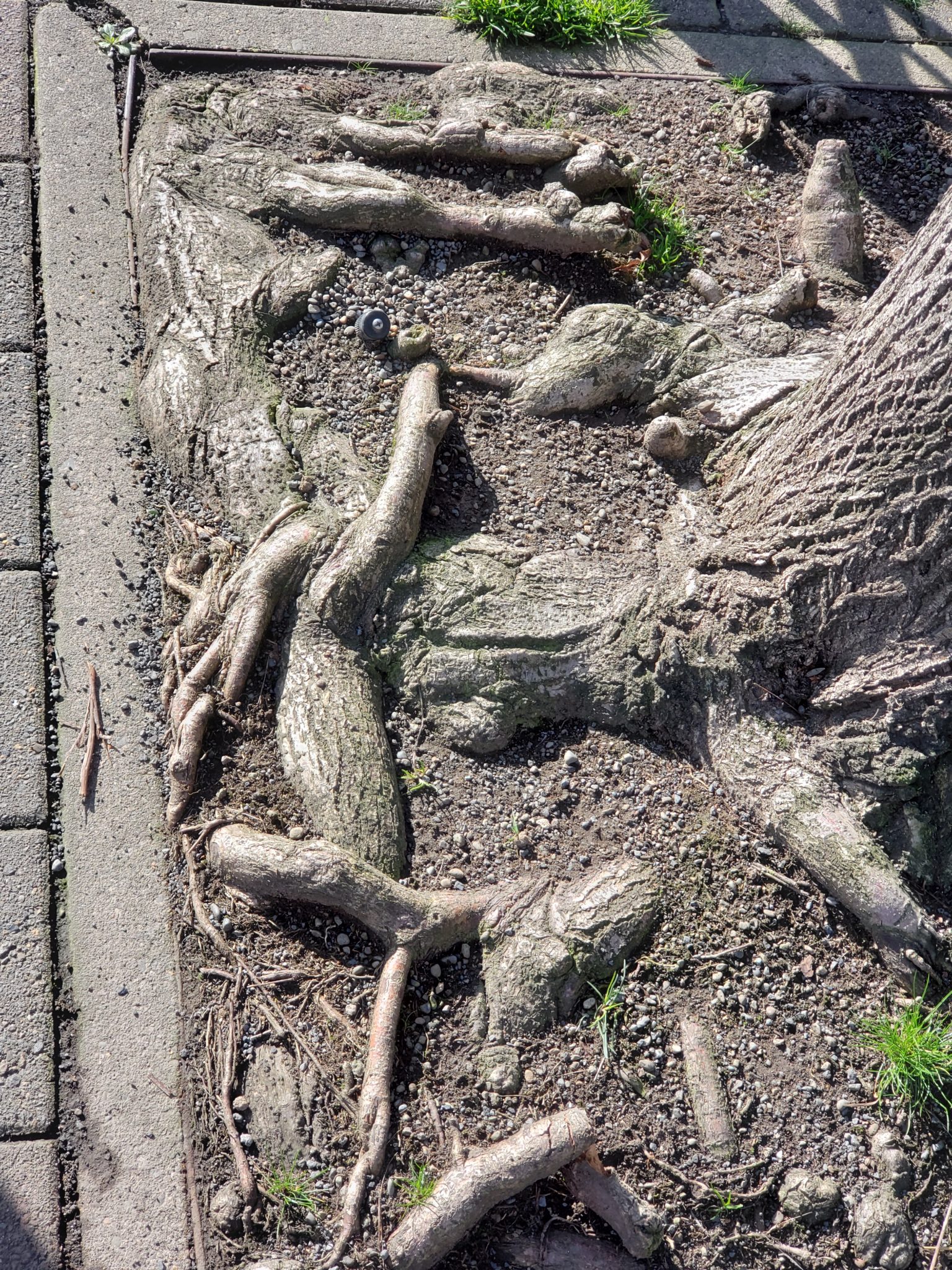
Arborist Advice: Do Not Limit Tree Root Growth
A healthy tree root system grows in soil containing water, air, and minerals. When a tree’s root growth is limited by pavement, sidewalks, or foundations, the tree’s access to minerals and water is also limited. A tree planted under these conditions will eventually decline as the root system cannot support the needs of the larger tree.
Most tree problems can be prevented by planting the right tree in the right place. In addition to considering Plant Hardiness Zones, drainage, sun and wind exposure, and proximity of the mature canopy to surrounding structures and plants, every tree should be planted in an area large enough to accommodate a healthy root zone.
Root zone size varies widely by tree species, age, and soil type. As a general guideline, you can assume that the mature root zone will be about the same size as the dripline of the mature canopy. For example, if a tree has a mature canopy diameter of 30 feet, then assume that the mature root zone has a diameter of 30 feet.
Planting Near Structures
Some tree roots are strong enough to crack foundations and break pipes. When deciding which tree to plant near a structure, determine the height and width of the mature tree canopy and the presence of nearby obstacles to root or canopy growth. Plant the tree at least half the width of the mature tree canopy away from any large permanent structure.
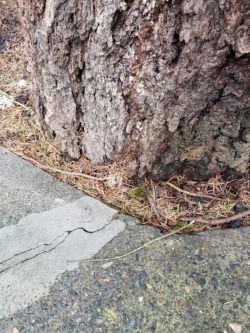
Planting Near Pavement
Because pavement prevents water from penetrating into the soil, trees planted too close to pavement (as shown above) may only develop their root system on the side of the tree that has access to water.
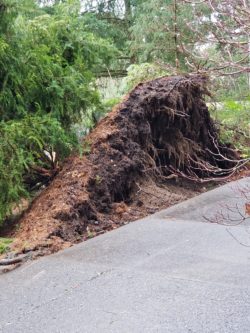
This imbalanced root system increases the likelihood of a tree toppling in wind (as seen above).
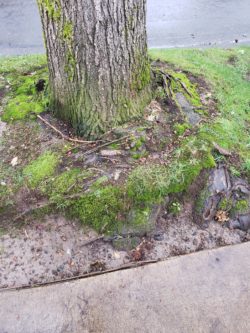
Planting trees in the right of way between the street and sidewalk provides many environmental benefits, but presents a unique challenge to healthy root growth. Water penetration is limited on two sides of the tree. Shallow roots can heave pavement and sidewalks, creating tripping hazards. The depth of large roots varies by tree species.
The roots of the sweetgum tree seen above are beginning to circle the trunk root flare in an effort to seek water and nutrients in the restrictive planting space. It is also obvious that the major roots of this tree have been cut over the years to accommodate the sidewalk, which is detrimental to the tree’s health and stability.
If you would like to plant a tree near the street, consult a list of recommended species for your planting area. Many local cities provide lists of approved street trees as part of their city street planting permit process. Most of the lists are organized by planting area size and proximity to overhead utility wires. As these lists are updated regularly, check with your local city to confirm current approved trees before planting.
City of Tigard, “Approved Trees List”
City of Lake Oswego, “Right Tree in the Right Place”
City of Beaverton Street of Trees Tour is a walking route planted with some of the trees the City of Beaverton recommends for use along city streets. This is a good way to see the tree’s characteristics in person before you plant it on your property.
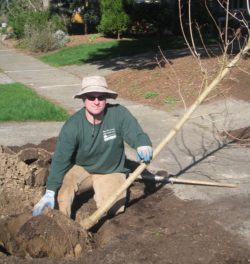
Some young trees are already root bound in their pots. Before planting, loosen coiled roots by hand or with water and spread the roots out when placing the tree in the planting hole. This encourages the roots to grow into the surrounding soil.
Planning for a healthy root system during planting will promote tree health for the entire life of the tree.


